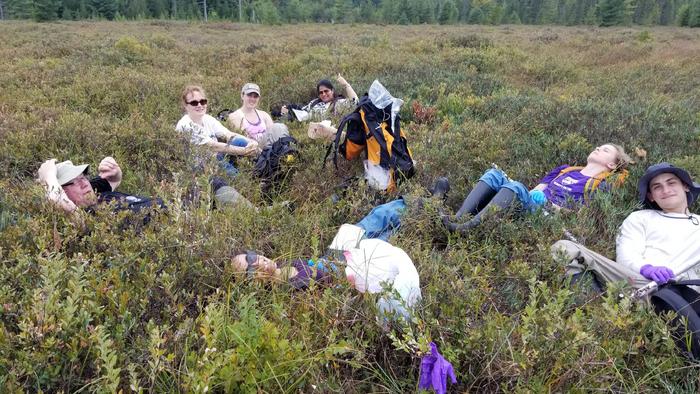An analysis of fungi collected from peat bogs has identified several species that produce substances toxic to Mycobacterium tuberculosis (Mtb), the bacterium that causes tuberculosis in humans. The findings from in vitro studies carried out by a National Institutes of Health research team suggest that one promising strategy for developing more effective therapeutics might be to target bacterial mechanisms that help to maintain levels of compounds known as thiols.
Research lead Neha Malhotra, PhD, at the NIH Laboratory of Clinical Immunology and Microbiology, and colleagues reported their findings in PLOS Biology, in a paper titled “Environmental fungi target thiol homeostasis to compete with Mycobacterium tuberculosis.”
Every year, millions of people around the world fall ill from tuberculosis and more than one million people die, despite the disease being preventable and curable. However, treatment requires taking daily antibiotics for months, which can pose significant challenges. As the authors noted, “Tuberculosis remains a leading threat to global health and new chemotherapies to shorten the duration of treatment are urgently needed.”
To explore potential targets for treatment-shortening strategies, Malhotra and colleagues turned to sphagnum peat bogs. These freshwater wetlands harbor abundant species of bacteria in the Mycobacterium genus—the same genus as the tuberculosis-causing bacterium Mycobacterium tuberculosis. In these bogs, fungi compete with mycobacteria to grow within a decomposing “gray layer” that, similarly to lesions found in the lungs of tuberculosis patients, is acidic, nutrient-poor, and oxygen-poor.
“One important environmental reservoir for slow-growing mycobacteria is in the decomposing ‘gray-layer’ underneath the zone of active growth of sphagnum peat bogs,” the authors noted. Pathogenic mycobacteria, such as those causing the human diseases leprosy and tuberculosis, are found in abundance in sphagnum peat bogs where the acidic, hypoxic, and nutrient-poor environment gives rise to fierce microbial competition. “The characteristics of the ‘gray-layer’ of a sphagnum peat bog has many similarities to the microenvironment within the caseous lesion of an Mtb-infected human lung in that it is nutrient-poor, hypoxic, and acidic,” the investigators wrote.
For their study, the team sampled sphagnum bogs throughout the Northeastern United States to identify fungal species that naturally compete with Mycobacteria, “to identify antitubercular compounds they may produce and what they have identified as the most vulnerable targets under these conditions.”
To do this, in the lab, the researchers grew Mycobacterium tuberculosis alongside each of about 1,500 species of fungi collected from the gray layer of several peat bogs. They identified five fungi that had toxic effects against the Mtb bacterium. “In our initial screen of the ~1,500 fungi isolated from sphagnum samples at or near the gray layer cores, we identified a total of five fungi that showed robust induction of antimycobacterial activity upon exposure to live cells of Mtb,” they noted. Three of these species, isolated from different geographical areas, were found, through whole genome sequencing, to be distinct yet closely related. These three fungi expressed patulin, a known mycotoxin, in the presence of Mtb. The fourth fungal species produced another mycotoxin, citrinin, and the fifth produced a compound called nidulalin A.
Each of the three compounds appeared to exert its toxic effects on the tuberculosis bacterium by severely disrupting cellular levels of a class of compounds known as thiols—several of which play essential roles in the molecular processes that help keep bacterial cells alive and functional.
“Remarkably, the three metabolites produced by these five unique fungi all target the same physiological process in Mtb cells: thiol homeostasis,” the investigators further stated. “This suggests that fungi have selected for the most vulnerable target in mycobacteria under the specific microenvironmental conditions of the gray layer of a sphagnum bog and identified thiol stress as being the most effective target.”
The researchers noted that these three compounds themselves are unlikely to be good drug candidates. However, especially given the similarity between the peat-bog environment and tuberculosis lesions, the findings provide support for a particular strategy for the development of treatment-shortening drugs: targeting the biological processes that maintain thiol levels in the tuberculosis bacterium.
“The induction of thiol-reactive mycotoxins through three different systems in response to exposure to Mtb suggests that fungi have identified this as a highly vulnerable target in a similar microenvironment to that of the caseous human lesion,” the authors pointed out. “Although mycotoxins, per se, are not promising starting points for drug discovery, they do point to a rich target area that could be exploited and there are many other strategies for drug discovery that could lead to enhanced thiol oxidative stress.”
